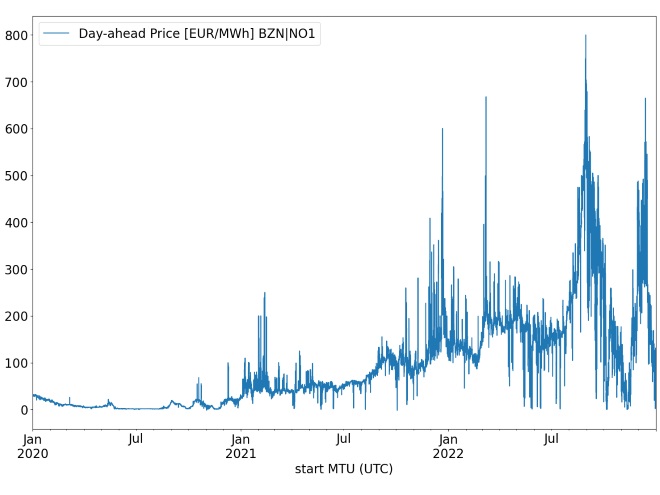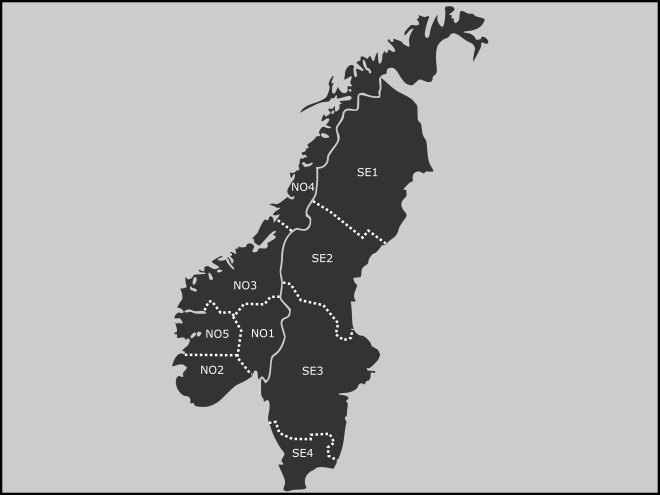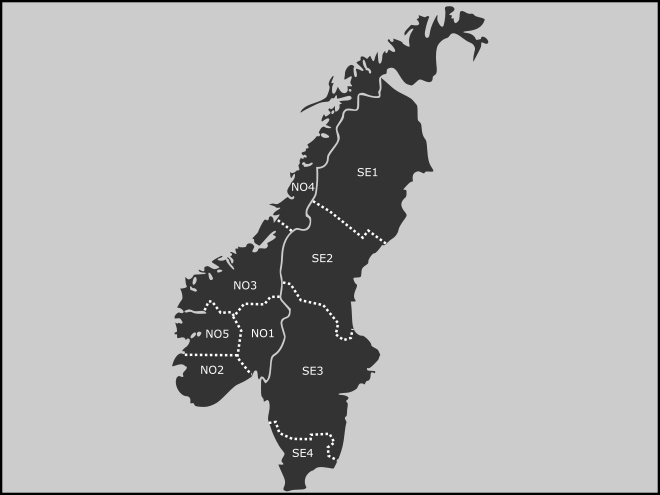About the project
The purpose of this thesis is to compare the performance of different algorithms on time series data prediction (24-hour forecasts) of energy market prices in Norway (Bidding zone NO1 - Østlandet) in the year 2022. Based on research regarding external factors’ impact on energy market prices in Norway and Europe, an aggregate dataset consisting of energy market prices, time of price, and external factors will be created. This dataset will be preprocessed to optimize the performance of the different algorithms. After which 4-5 traditional regression ML algorithms will be chosen based on research about time series 3 data prediction ML algorithms and will be used to train models on the dataset. When the models have been trained, they will be tested based on several performance metrics. Finally, the models will be compared based on their performance, and a conclusion will be drawn about which ones perform best. The algorithms will be implemented in the Python ecosystem with Jupyter notebook files.
Electricity is not like most other commodities in that it is an extremely perishable commodity as it must be consumed at the same time as it is generated, it is therefore important that there is a constant balance between production and consumption). Both production and consumption are affected by factors such as temperature which can affect the need for indoor heating or air conditioning, rainfall which determines the availability of hydropower, and gas prices as gas is both used for direct heating and electricity production.. As a result, both supply and demand for electricity vary a lot and can lead to unstable prices. By predicting electricity prices, electricity market stakeholders (producers and consumers) can regulate their production and demand, which minimizes waste, maximizes carbon efficiency, and gives consumers access to lower price electricity.
Pictures:
- Displays a graph of the day-ahead price in the currency Euro per MWh in bidding zone NO1 (Norway Østlandet) over the period from the start of 2020 to the end of 2022 measured with an hourly interval. The graph illustrates the shift to higher prices and stronger price volatility.
- Displays how Norway and Sweden are divided into bidding zones. A bidding zone is the largest geographical area within which market participants are able to exchange energy without capacity allocation.
Norway is currently divided into five bidding zones (NO1-NO5) and Sweden is divided into four bidding zones (SE1-SE4). The division of bidding zones reflects physical structural congestions (transmission constraints) in the grid. No constraints are given to the Day-Ahead market within bidding zones.
Project members
Khayam Nami
Isak Bamiani
Kjell Randby Kristensen
Ole Kristian Eriksen Nysted
About the client
Smart Innovation Norway (SIN) serves as our client for this project. As a non-profit research and innovation organization, SIN is dedicated to promoting the green transition and creating sustainable workplaces. They offer cutting-edge technology and innovative business models to Norwegian municipalities, publicly owned ports, and energy companies, with the primary objective of bridging the gap between idea and implementation, from theoretical concepts to practical applications.
With a team of over 70 professionals, SIN provides services in various domains, including applied research, innovation, commercialization of sustainable energy, applied artificial intelligence, digital entrepreneurship, smart cities, and social and behavioral innovation. Their mission revolves around achieving social, economic, and environmental sustainability by prioritizing the United Nations' 17 Sustainable Development Goals.
SIN has garnered considerable expertise in the realm of smart cities, having successfully completed numerous projects in the field. The outcomes of our project, along with those of similar initiatives, can play a pivotal role in advancing the digital transformation of urban areas. Identifying the most appropriate machine learning model for predicting electricity prices offers valuable insights for research and innovation in the Internet of Things (IoT) and smart cities. This represents a significant stride toward fostering a more intelligent and adaptable everyday life for both Norwegian citizens and industries.
Supervisor
Thi Thuy Nga Dinh, Østfold University College




